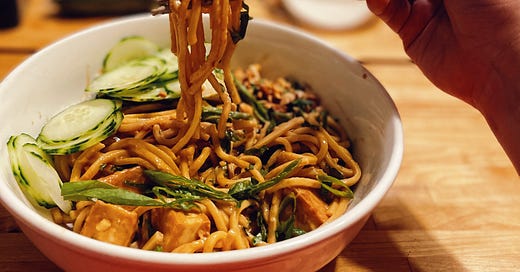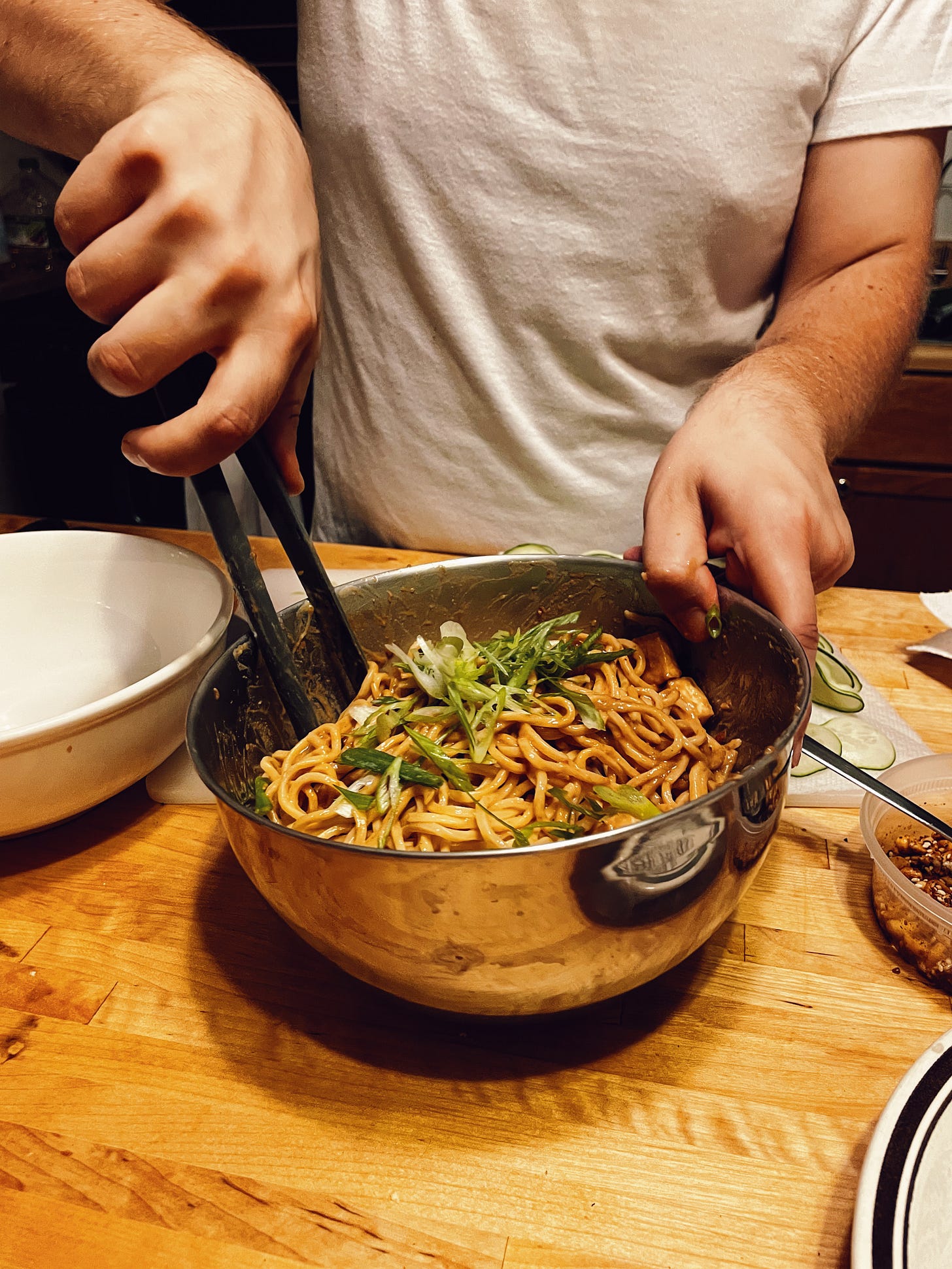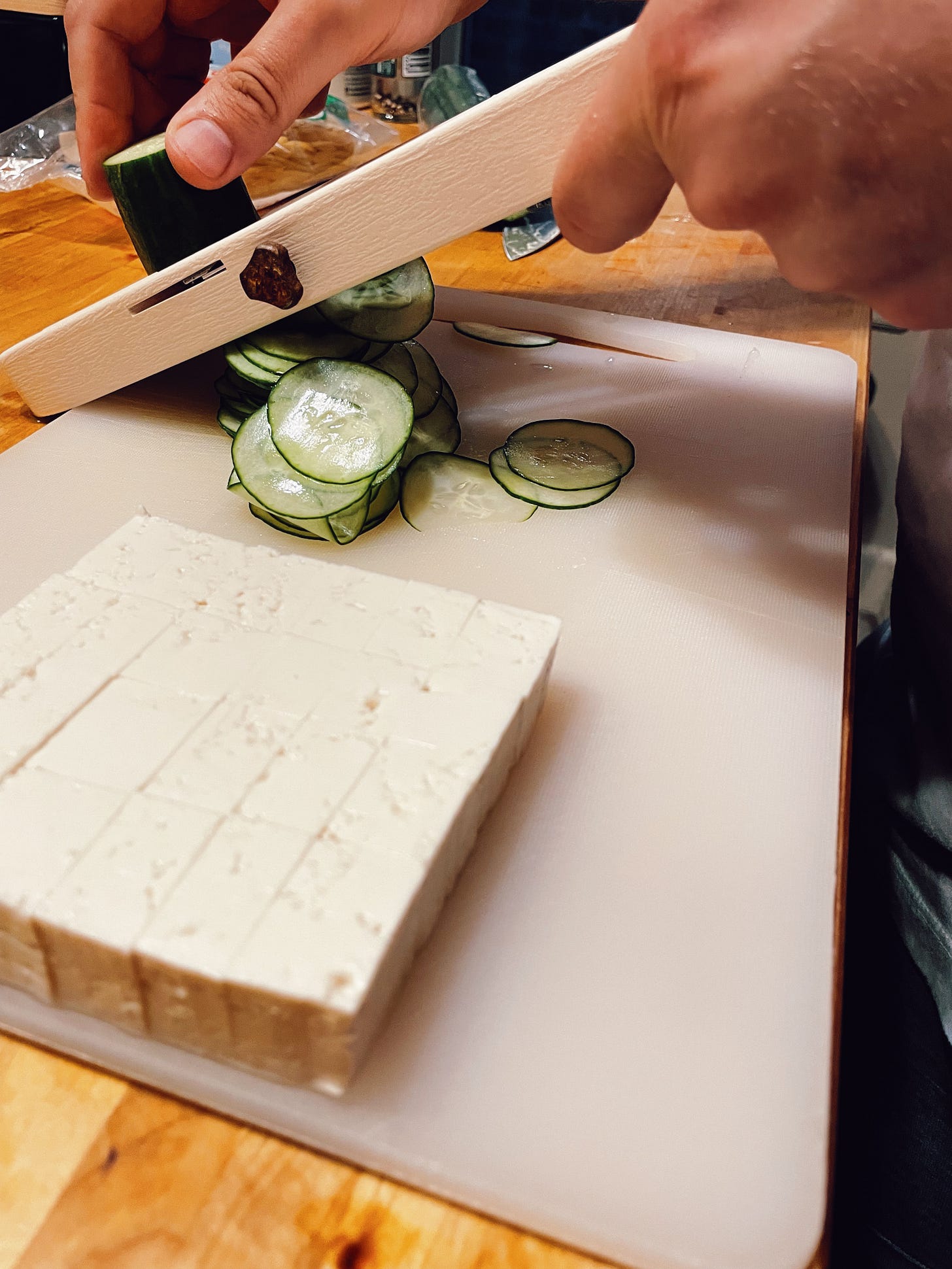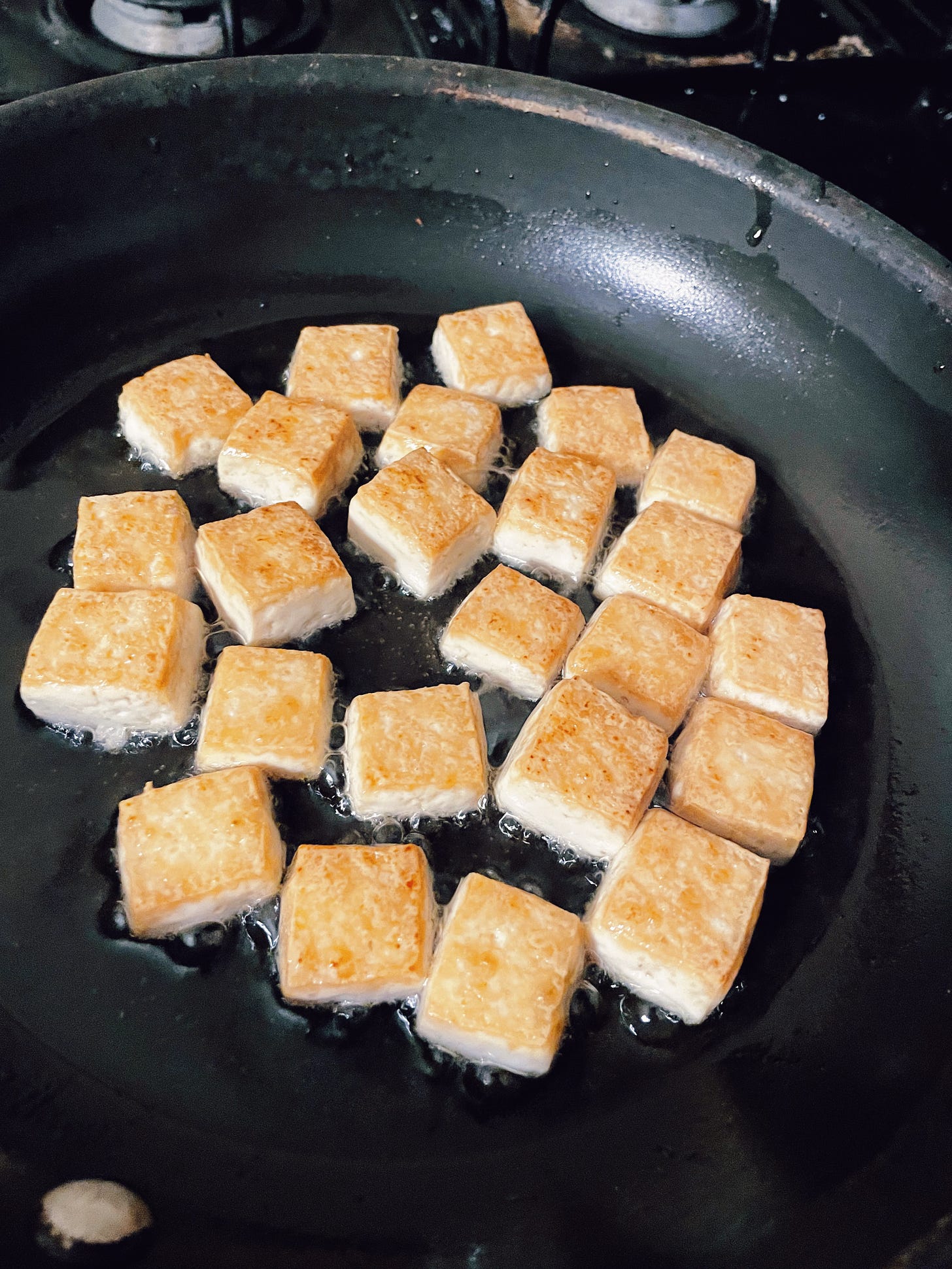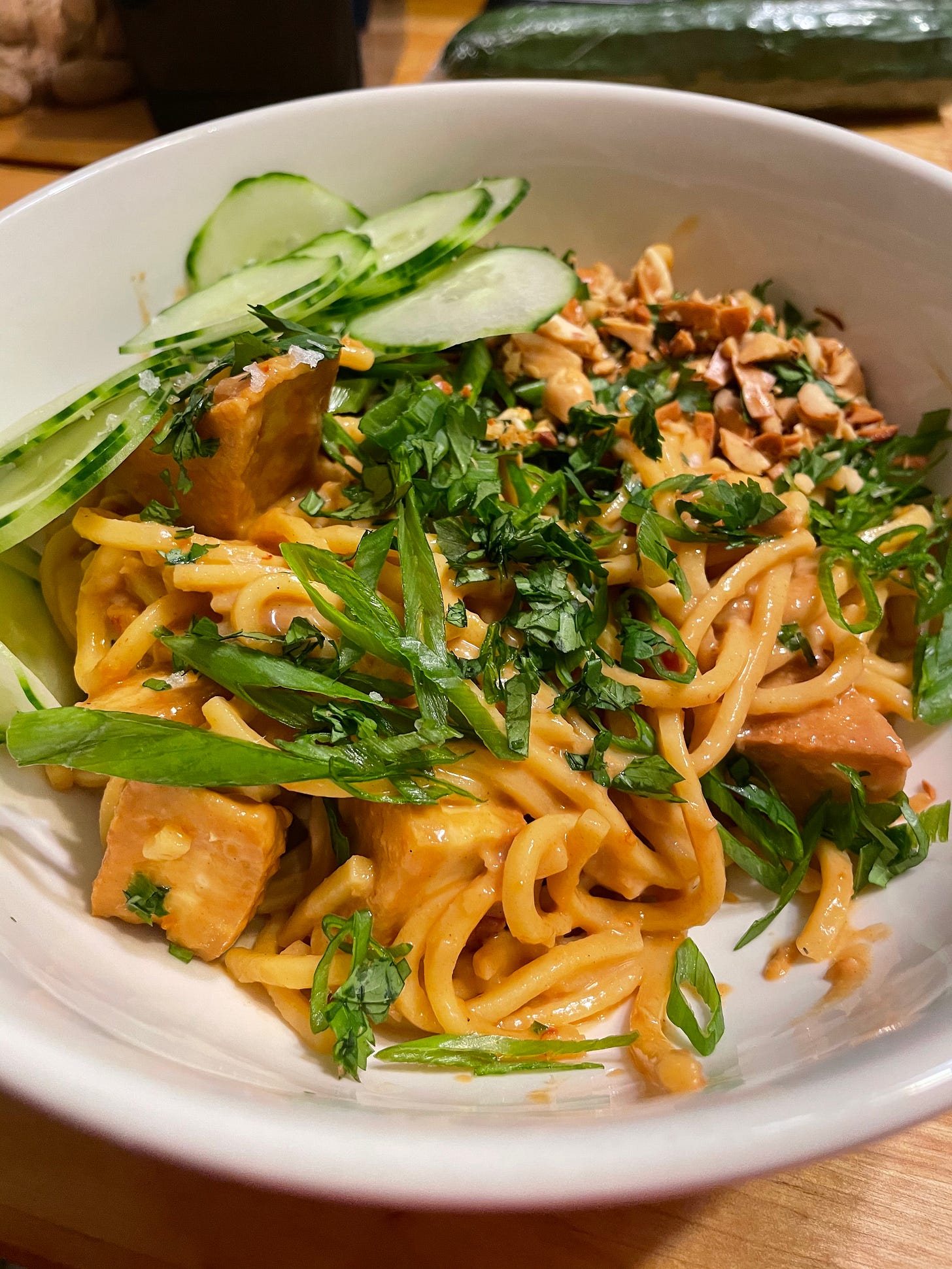(This has a brief discussion of weight, so if you don’t want to deal with that, skip ahead.)
Our dog Buddy went to the vet a couple weeks ago, and we found out that he lost around three pounds since his last yearly visit. We both frowned when the number blinked up on the scale — 38 pounds, when he’s always hovered around 41. Three pounds is a lot to lose for most dogs, and for Buddy especially. He’s extraordinarily long and lean like a whippet or greyhound — a balletic, muscular little dog with the efficient gait of a racehorse.
The problem with Buddy is that despite being a prodigious lover of stray pizza crusts and moldy alley tamales, he hates dog food. We cajole, trick, adorn with chicken, try every brand — still, he barely eats, to the point where I fully believe he’d starve himself to death if we let him. The vet, rubbing Buddy’s upturned belly on the floor, suggests an antacid. (To think: a distant grandchild of wolves, now taking anxiety medication and Pepcid AC.) If this fails, we are to pursue the aptly-named “Just Food For Dogs,” a fresh, human-grade dog food that costs more than our electric bill per month.
Back at home, I run my fingers down his bony spine, feeling a bit despondent. Why won’t you eat, you idiot, I think, his little button eyes staring blankly into mine. No reply. I myself can’t relate to his problem. Over the past decade or so, with a few exceptions for punishing diets where I lost about one Buddy’s worth of weight, the number at the human vet has only ticked upward for me. Like many chronic health issues, the cause of my increased weight is likely multi-factor, per my doctor: genetics; a stint on SSRIs; modern life triggering an excess of cortisol in my body; aging. I eat healthier and less than I ever have, and try to move around some. Still, my body seems to have settled in this place.
I am told we now live in the age of body acceptance. In my case, the acceptance comes with gritted teeth and fingers crossed behind my back. I am loved by many people, sure. But I remember how much easier it was to be a size 6 in college, and I know how “society” views me, or rather that society would prefer not to view me. The last time I was catcalled, the guy said I was disgusting! And of course, I’m writing to you in the context of a food blog, and I love to cook and eat — but in group chats or at work happy hours, I like to talk up the salads we make and the rarity of my indulgences. I feel the urge to take a vow of privation to everyone within earshot if I so much as glance at a cupcake, and I instinctively eat like a bird at parties. I know this is, frankly, really fucked up, but I can’t help myself.
While talking about Buddy’s health post-vet, Johnathan mentioned a quote from David Hyde Pierce, more familiar to many of us as Niles Crane. For those not steeped in Frasier lore, the show also had a dog named Eddie, played by a Jack Russell Terrier actor named Moose. Pierce said something immensely touching about Moose:
“Our last show, when we did the bows before the audience, as we did every show, they surprised us and brought out Moose, who is the original dog, Eddie...We’d seen him recently, but he was snow-white. Barely had spots, he was so old. His fur turned white. He was round like a sausage. And he came waddling out. He was, as dogs are, the encapsulation of all the time that had passed. We all aged, things happen, but there in that little guy was all of our time together, in this fat little ancient dog. Canine metaphor.”
Looking from Buddy’s slender hips to my own generous pair, I am moved by the thought. Both our bodies keep time, but mine holds worries and regrets and expectations, too. Not his. He simply is in his body, absorbing the weight of time and our love and reflecting it back to us, while his face turns silver and his long legs get liver spots at the dignified middle age of seven. He takes that love and rolls with it in the grass, and shouts it with his houndy roo-ing voice, and chomps it down with the last bite of an egg sandwich we can’t help but give him (even though he skipped breakfast again). The least I could do is visit the same kindness and love upon my body; the least any of us could do is nourish our lucky, timestamped bodies, Buddy included. —r
As much as my life revolves around food, I’ve been in a bit of a rut lately. Work has been really busy in the last few months; I’ve been working more days and longer days, and the hot weather has really killed some of my desire to cook and eat. When it’s 90 degrees outside, the back of my truck is pushing 120 or 130, and a day of that can be enough to put me off the idea of eating anything at all. On the way home I’ll text Rachel and we’ll talk dinner, racking our brains for something that would be cool, but filling. A big salad? Ceviche? A popsicle and a lie down?
“I could really go for those sesame noodles,” she texted.
Sesame noodles?
“You know, those cold sesame noodles.” I didn’t know. Despite apparently being such a popular dish that they’re almost universally referred to as a takeout classic in every article you read about them, I’d never actually eaten them. Fresh, chewy noodles are one of my absolute favorite textures, and it turns out that tossing them with crisp cucumber and a creamy sauce that’s equal parts sweet, sour, and spicy transforms them into a dish that somehow manages to be hearty and refreshing at the same time.
While cold noodle dishes exist all over China (and the rest of Asia, for that matter), they’re especially associated with Sichuanese cuisine, where there are as many variations on them as there are cooks. It’s no surprise, then, that the version that became an American Chinese restaurant standard was invented by a chef who originated in Sichuan province, Yu Fa “Shorty” Tang of New York’s Hwa Yuan. Between the mainland and New York, Chef Tang also spent time in Taiwan, where he may have found inspiration in a dish of cold noodles dressed in sesame paste known as ma jiang mian (麻醬麵). To make matters more confusing, if you do a YouTube search for 麻醬麵, you’ll find a recipe that looks very similar to Chef Tang’s dish calling itself Old Beijing Sesame Noodles. Whether Sichuanese, Taiwanese, or indeed from Old Beijing, the noodles became an American classic in Manhattan’s Chinatown, where they remain a signature dish at Hwa Yuan.
I try not to mess with the classics too much, but I couldn’t resist a few changes. Sesame noodles usually don’t have any protein, but to make them a more complete dinner, I think some fried tofu is a good idea. While the original has cucumbers cut into matchsticks, I think some very thin slices work a little better. To add a little extra crunch, I fried some chopped peanuts and sesame seeds with chili flakes to sprinkle on top at the end.
Some notes: This recipe is meant to be made with fresh, not dried, wheat noodles. The best ones I’ve used for this dish are the Twin Marquis brand Lo Mein noodles. Inexpensive, perfectly chewy, and thankfully easy to find, I think they’re absolutely perfect for this dish. If you can only find dried lo mein noodles, use about half a pound of them instead. If you can’t find Chinese sesame paste, you can swap it out for tahini, but you’ll be missing out on a lot of toasty complexity in the final dish. —j
COLD SESAME NOODLES
serves two
7 ounces of firm tofu (half a brick)
1 pound of fresh lo mein or other round wheat noodles
½ of a cucumber
1 thumb-sized piece of ginger, grated finely
1 clove of garlic
¼ cup of soy sauce
2 tablespoons of rice vinegar
2 tablespoons of sesame oil, plus a drizzle for the noodles
3 tablespoons of Chinese sesame paste
2 tablespoons of peanut butter
2 teaspoons of granulated sugar
1 tablespoon of chili garlic sauce (the coarser Huy Fong kind, or similar)
3 scallions
1 small handful of cilantro
1 handful of shelled peanuts, chopped
2 big pinches of sesame seeds
1 big pinch of chili flakes
Set a large pot of salted water to boil over high heat. Coat the bottom of a large skillet with vegetable oil, and place over medium heat.
Cut the tofu into cubes and add it to the skillet in a single layer. There’s no need to stand over the pan and keep it from sticking — if you used enough oil and your pan was hot, it will crisp up and release from the pan when it’s ready.
Meanwhile, add the rice vinegar to a large, deep bowl. Grate the garlic into it, and let it sit to mellow out for a few minutes.
Wash and dry the scallions and cilantro. Set aside.
Slice the cucumber very thinly. If you have a mandolin, now is the time to use it. Rince the cucumber slices well under cold running water, and place them in a bowl or container of very cold water until just before serving. This will keep them as crisp as possible. Set aside.
To the large bowl with the vinegar and garlic mixture, add the ginger, the soy sauce, the sesame oil, sesame paste, peanut butter, sugar, and chili garlic sauce. Whisk well to combine, and give it a taste. The sauce should be pleasantly sweet, but not at all cloying. You can adjust it at this point with more vinegar or chili sauce if necessary. Set the sauce aside.
When your tofu cubes are golden and releasing from the pan, flip them over. When crisp on both sides, remove them from the oil and drain on a sheet of paper towel. Pour the oil out of the pan, but don’t wipe it clean.
Over medium-high heat in the skillet where you fried the tofu, stir fry the chopped peanuts until they take on a little color and start to look glossy. Give one a taste, and if they’re slightly bland (mine were), add a big pinch of salt. Add the sesame seeds and chili flakes, and after giving them a few seconds to heat through, remove the mixture from the pan and set it aside.
Add the noodles to the boiling water. Just like fresh pasta, fresh Chinese noodles cook pretty quickly. While the package says that they take five minutes to cook, I would taste one after about three minutes to see if they’re springy and chewy, rather than doughy at that point. If not, let them boil for the full five.
Drain the noodles well and shock them under cold running water to keep them from overcooking. Drizzle the noodles with a bit of sesame oil and toss them to distribute it well. This is simply to keep the noodles from sticking to each other while they cool.
Chop the cilantro and the scallions. Add half of each to the sauce bowl, along with the tofu, and finally the noodles. With tongs or chopsticks, toss the mixture well so that the noodles and tofu are evenly coated in the sauce. Divide between two bowls, and top with the rest of the scallions and cilantro, the sliced cucumber, and the sesame seed/peanut mixture. Enjoy immediately with the coldest beer you can find.
